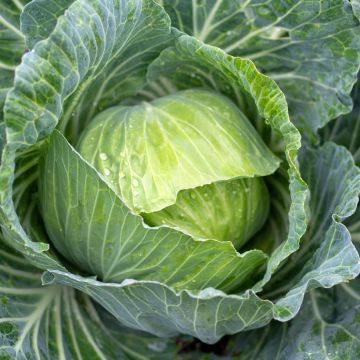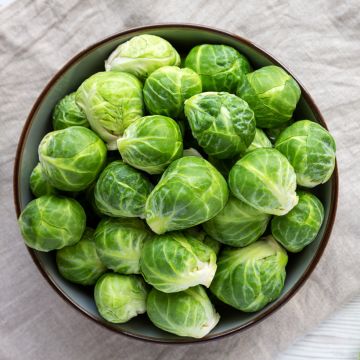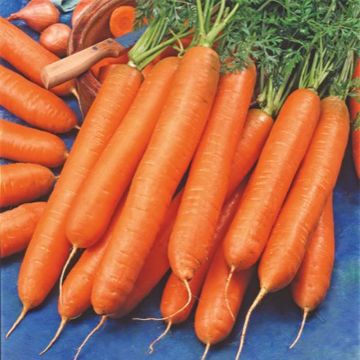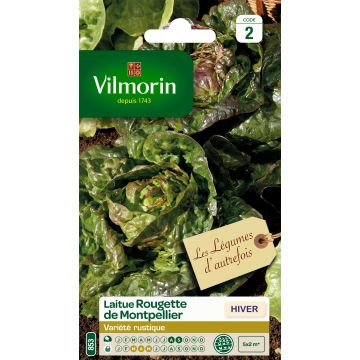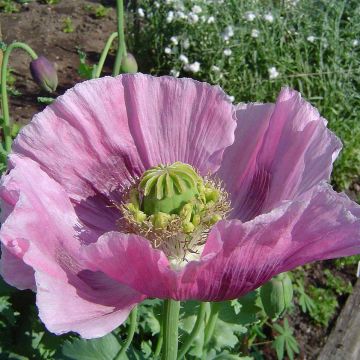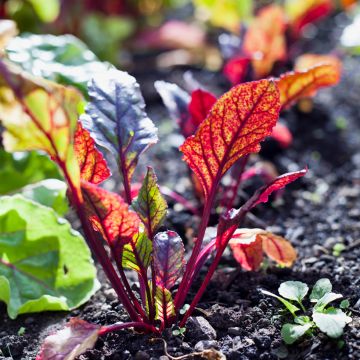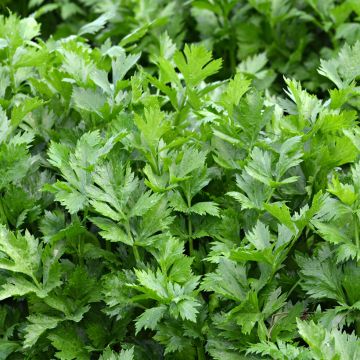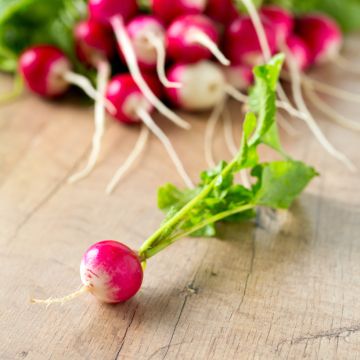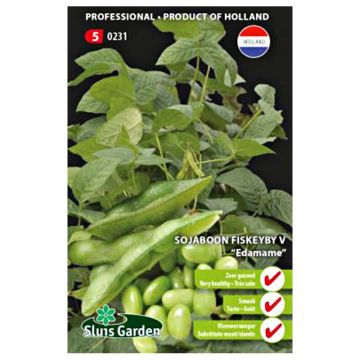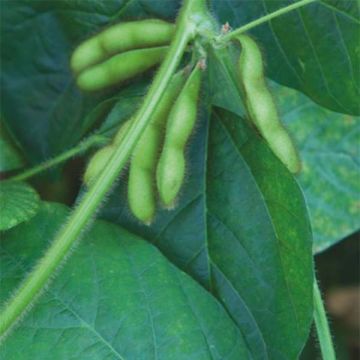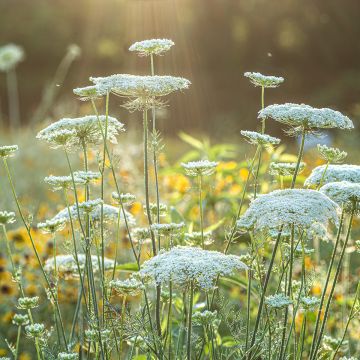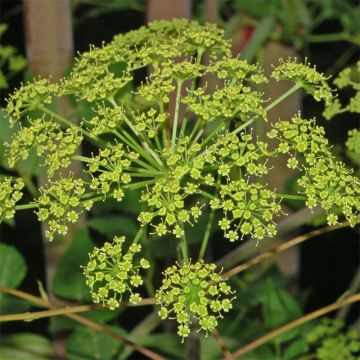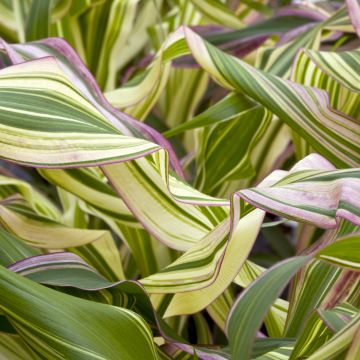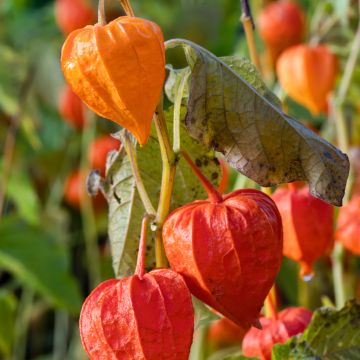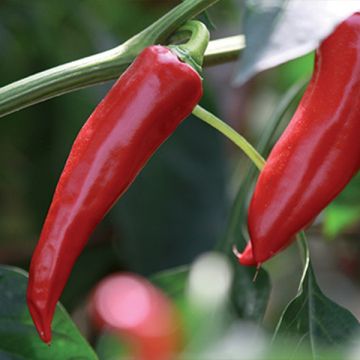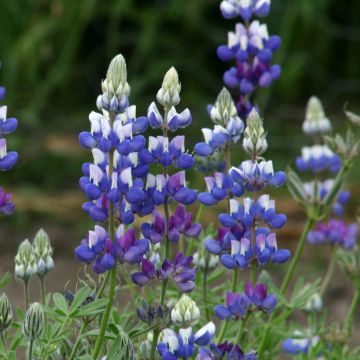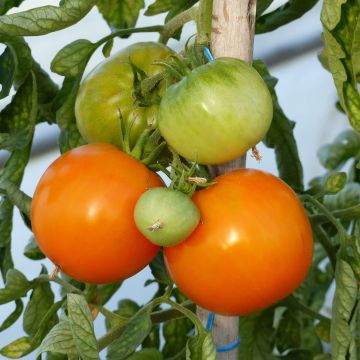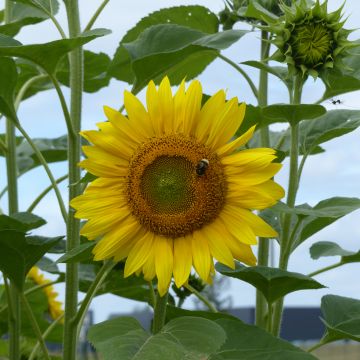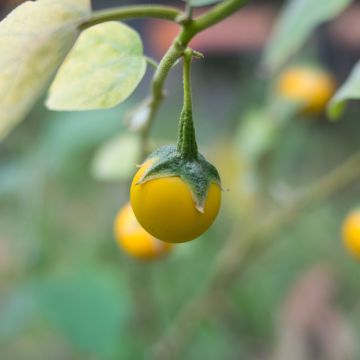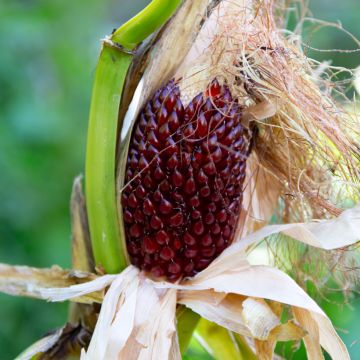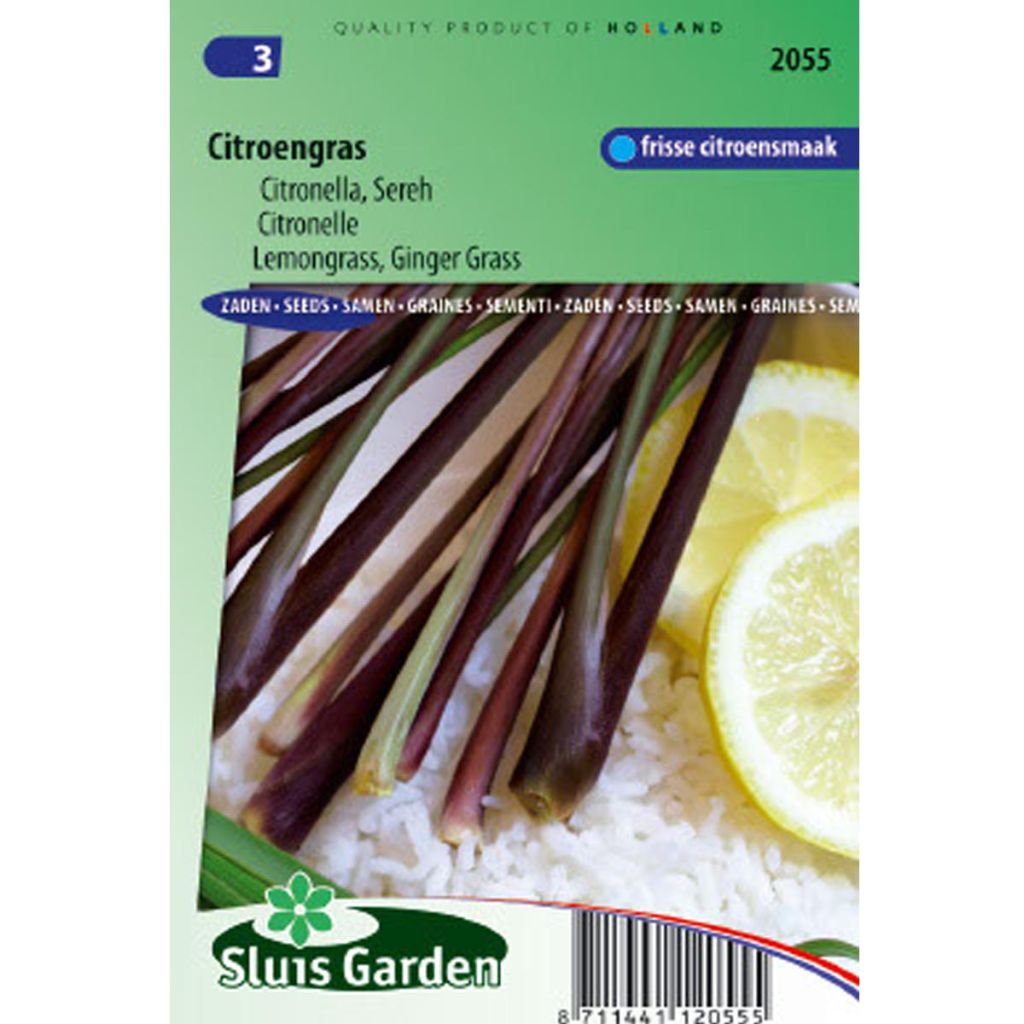

Citronnelle
Cymbopogon citratus
Cymbopogon citratus
Lemongrass, Lemon Grass, Fever Grass
The sowing is very good and has grown very quickly, very pleasant for herbal teas or cooking. I recommend.
Anne Marie, 05/10/2020
This item cannot be shipped to the selected country
Dispatch by letter from €3.90
More information
Dispatch by letter from €3.90
More information
Schedule delivery date,
and select date in basket
This plant carries a 6 months recovery warranty
More information
We guarantee the quality of our plants for a full growing cycle, and will replace at our expense any plant that fails to recover under normal climatic and planting conditions.
Seed-only orders are dispatched by sealed envelope. The delivery charge for seed-only orders is €3.90.
Description
Lemongrass is a perennial tropical herbaceous plant that forms a clump of linear leaves with a very exotic lemon flavour. It is a fairly demanding plant that will reward the most attentive gardeners with its unique aroma, essential in Asian cuisine.
In cooking, Lemongrass stalks are used to flavour many Asian dishes, especially Vietnamese ones, such as Lemongrass Chicken or shrimp broths.
It has a loose clumping habit and can reach a height of 90cm (35in) if grown under good conditions. Its leaves are linear and pale green. Its stalks are hollow and bulbous at their base. It is the stalks that are consumed, preferably tender and fresh, finely chopped.
It should be noted that this plant is quite sensitive to cold, demanding in heat and water. Therefore, it is best to reserve its cultivation in open ground for particularly mild climates, rich and well-drained soils, and... experienced gardeners! If grown in a greenhouse, it will need to be protected in winter if the greenhouse is not heated, as it does not tolerate temperatures below 10°C (50°F). As it also does not tolerate winter humidity (yes, Lemongrass requires some effort!), we strongly recommend growing it in a pot (at least 30cm (12in) in diameter) that can be sheltered in a bright place at the first signs of frost.
Lemongrass is sometimes confused with Lemon Verbena or Lemon Balm, two herbs with lemon scents that are nevertheless quite different.
Harvest: Harvesting can be done from May to October, depending on needs.
Storage: Lemongrass can be stored for a few days in the refrigerator or for a few months by drying or freezing. However, it is preferable to consume it fresh to fully enjoy its aroma.
Gardener's tip: To limit watering, we recommend mulching the soil with thin successive layers of grass clippings, if possible mixed with dead leaves, starting from late May. This protection, which keeps the soil moist, also reduces weed growth.
Harvest
Plant habit
Foliage
Botanical data
Cymbopogon
citratus
Poaceae
Lemongrass, Lemon Grass, Fever Grass
Cultivar or hybrid
Perennial
Other Vegetable seeds from A to Z
Planting and care
Sowing:
Sowing Lemongrass is done from the end of winter, under shelter, at a temperature between 20 and 25°. Germination is often slow (between 21 and 40 days) and sometimes a bit random.
Sowing is done from the end of February, in a warm place at home, ideally in a heated propagator or above a radiator, and in good seed compost. The seeds are barely covered. Place your tray in full light and water with a very fine mist. It is important to keep the substrate moist but not waterlogged. When your young plants are strong enough to handle, transplant them into buckets, with 3 plants per pot.
Final planting is possible once all risk of frost has passed. Before planting them outside, it is advisable to "harden off" the plants by gradually exposing them to outdoor conditions for about ten days.
Cultivation:
Lemongrass thrives in sunny, fertile, preferably sandy and well-drained soil. We strongly recommend planting it in a pot. If compost is needed, it should preferably be applied in autumn, in the form of well-rotted compost, by scratching it into the soil to a depth of 5cm (2in), after having loosened the soil as you would for any vegetable crop.
Seedlings
Care
Intended location
-
, onOrder confirmed
Reply from on Promesse de fleurs
Vegetable seeds
Haven't found what you were looking for?
Hardiness is the lowest winter temperature a plant can endure without suffering serious damage or even dying. However, hardiness is affected by location (a sheltered area, such as a patio), protection (winter cover) and soil type (hardiness is improved by well-drained soil).

Photo Sharing Terms & Conditions
In order to encourage gardeners to interact and share their experiences, Promesse de fleurs offers various media enabling content to be uploaded onto its Site - in particular via the ‘Photo sharing’ module.
The User agrees to refrain from:
- Posting any content that is illegal, prejudicial, insulting, racist, inciteful to hatred, revisionist, contrary to public decency, that infringes on privacy or on the privacy rights of third parties, in particular the publicity rights of persons and goods, intellectual property rights, or the right to privacy.
- Submitting content on behalf of a third party;
- Impersonate the identity of a third party and/or publish any personal information about a third party;
In general, the User undertakes to refrain from any unethical behaviour.
All Content (in particular text, comments, files, images, photos, videos, creative works, etc.), which may be subject to property or intellectual property rights, image or other private rights, shall remain the property of the User, subject to the limited rights granted by the terms of the licence granted by Promesse de fleurs as stated below. Users are at liberty to publish or not to publish such Content on the Site, notably via the ‘Photo Sharing’ facility, and accept that this Content shall be made public and freely accessible, notably on the Internet.
Users further acknowledge, undertake to have ,and guarantee that they hold all necessary rights and permissions to publish such material on the Site, in particular with regard to the legislation in force pertaining to any privacy, property, intellectual property, image, or contractual rights, or rights of any other nature. By publishing such Content on the Site, Users acknowledge accepting full liability as publishers of the Content within the meaning of the law, and grant Promesse de fleurs, free of charge, an inclusive, worldwide licence for the said Content for the entire duration of its publication, including all reproduction, representation, up/downloading, displaying, performing, transmission, and storage rights.
Users also grant permission for their name to be linked to the Content and accept that this link may not always be made available.
By engaging in posting material, Users consent to their Content becoming automatically accessible on the Internet, in particular on other sites and/or blogs and/or web pages of the Promesse de fleurs site, including in particular social pages and the Promesse de fleurs catalogue.
Users may secure the removal of entrusted content free of charge by issuing a simple request via our contact form.

































